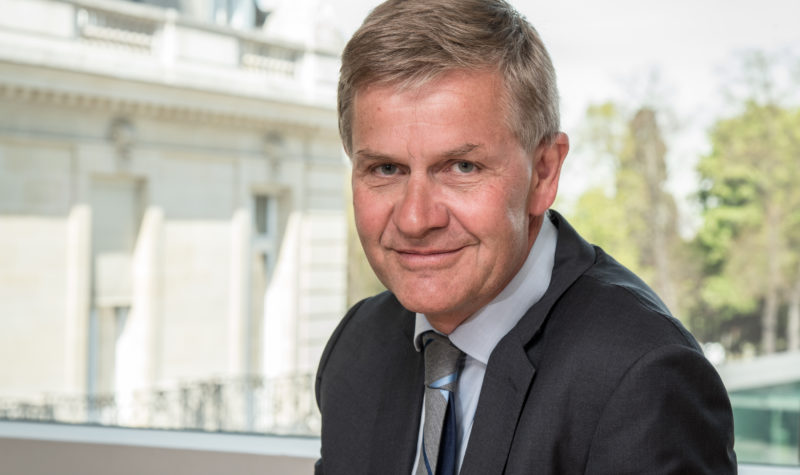In the modern world – where technology enables us to achieve more at a faster pace and social media boasting makes it easy to feel inadequate at the achievements of others – 30 could be considered the new 40.

We no longer need to stare horrified at the first grey hair wrapped around a comb or grimly pinch a thickening waistline to receive the impetus to stop and ask ourselves what we have done, and what we are going to do now to add meaning to our lives and value to the world.
As for people, so it goes for companies, organisations and initiatives: 30 years under the belt provides the opportunity to reflect and redirect.
Many such bodies will be casting an envious eye at the Montreal Protocol as it reaches this milestone, both in terms of its amazing achievement to date – setting the ozone layer on the road to recovery – and its new vision to help avoid up to 0.5° Celsius in global warming by the end of the century.
“The ozone story continues to inspire,” said Tina Birmpili, head of UN Environment’s Ozone Secretariat, under which the protocol falls. “It shows what can be achieved if we listen to the science, put aside our differences and act on behalf of our planet. This must not just be a one-off.”
On September 16, 1987, nations agreed on the protocol – The Montreal Protocol on Substances that Deplete the Ozone Layer, to give its full name. The goal was to slash the production and use of chlorofluorocarbons (CFCs), and other ozone-depleting substances, used in aerosols, refrigeration systems and many other items.
While such inventions brought comfort and convenience to billions, the substances they ran on were rather inconveniently ripping a hole in the ozone layer, allowing harmful ultraviolet radiation to stream through and threaten human lives, the environment and economies.
Fast forward to today, and the nations of the world – all of whom signed up to the protocol – have phased out nearly 99 per cent of ozone-depleting substances. In September 2014, a report from the Scientific Assessment Panel of the Montreal Protocol confirmed that the ozone layer is healing and will return to 1980 levels by mid-century. As a result, up to 2 million cases of skin cancer may be prevented each year by 2030.
Climate change in the crosshairs
With this success in the trophy cabinet, the Montreal Protocol is now helping to address the climate change challenge.
Hydrofluorocarbons (HFCs) became widely used substitutes for ozone-depleting substances, but these are climate-warming gases with significant global-warming potential.
In October 2016, after long and sometimes-fraught negotiations, parties to the Montreal Protocol put aside their differences and signed the Kigali Amendment to phase down these greenhouse gases.
Then-UN Secretary General Ban Ki-moon called the amendment “a major boost to limiting global temperature rise”.
The Paris Agreement calls for the world to limit global warming this century to under 2°C compared to pre-industrial levels, with a more-ambitious 1.5°C set as an aspirational target.
Everybody onboard
Countries that ratify the Kigali Amendment – and there have been six so far – are committing to cutting the production and consumption of HFCs by more than 80 per cent over the next 30 years.
The new deal includes targets and timetables to replace HFCs with more planet-friendly alternatives, and an agreement by rich countries to help finance the transition of developing countries to safer products.
Top officials from the chemical industry, including producers of chemicals and manufacturers of equipment that use HFCs, were also in Kigali, demonstrating support from the private sector.
Developed countries will start reducing HFCs as early as 2019. Developing countries will start later, provided 20 nations have ratified the amendment to allow it to enter into force. However, some African nations have expressed the desire to phase down the chemicals faster than required. They have good reason to do so.
According to UN Environment’s 2015 Africa Adaptation Gap Report, even limiting global warming to under 2°C will cut agricultural yields by 40 per cent, putting 50 per cent of the continent’s population at the risk of undernourishment.
There is still a long way to go, but the success on the ozone layer proves that when the world acts as one, as they are doing again with the Kigali Amendment, results will come.
To keep the energy up, and inspire the next generation of supporters for the coming challenge, the Ozone Secretariat, in partnership with Marvel Comics, is launching an Ozone Heroes campaign – reminding people that our human qualities are what equip us to solve the world’s most pressing problems and that we are all #OzoneHeroes.
“The Montreal Protocol is as necessary today as it was in the 1980s, not just for the ozone layer but also as part of global efforts to halt climate change,” said Erik Solheim, head of UN Environment. “Our continued success depends on the emergence of a new generation of heroes.”
